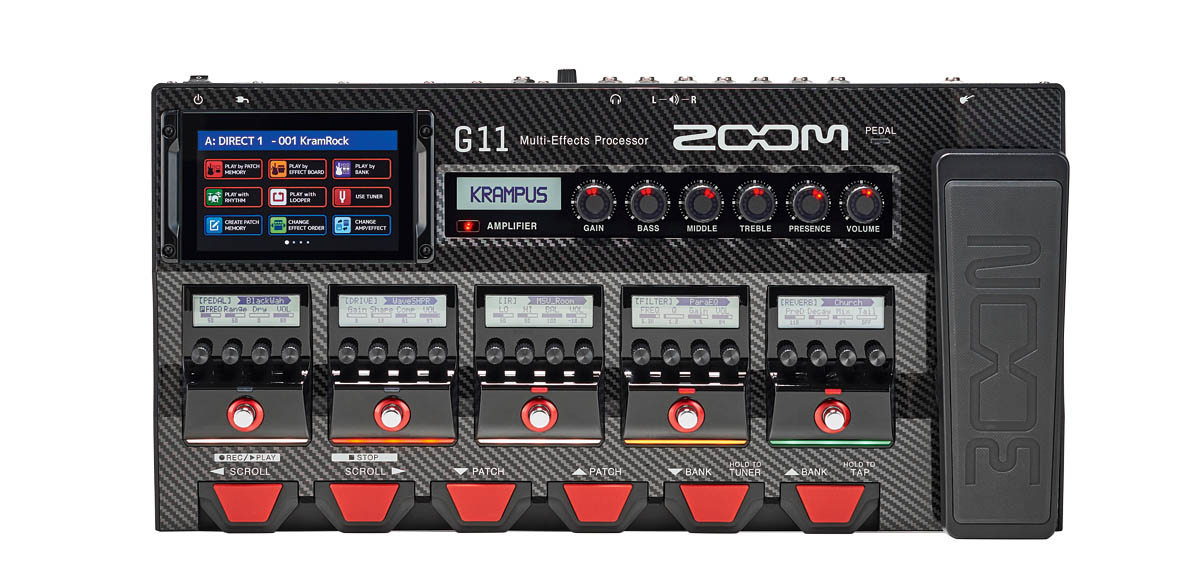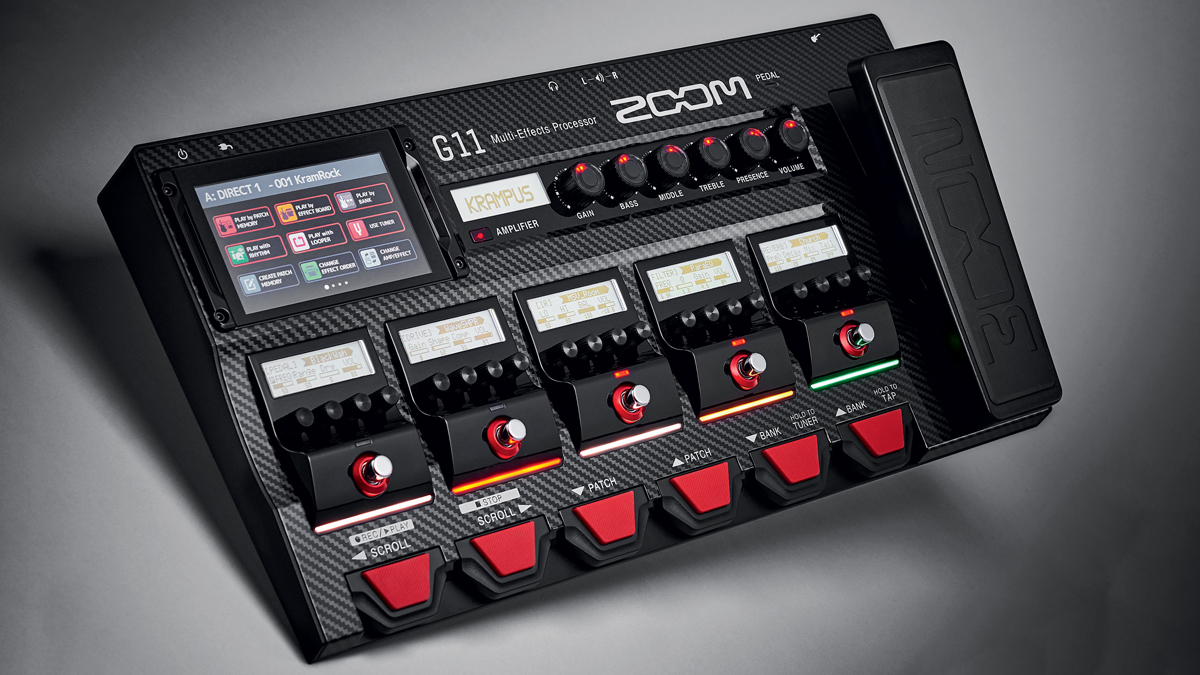Guitar World Verdict
The Zoom G11 is so easy to use that it won't take you long to start navigating its many, many features. There are heaps of amps and effects, of course, but with its built-in USB interface makes it an excellent recording tool, while the mono/stereo effects loop allows to incorporate your favourite pedals.
Pros
- +
Effects loop allows you to add extra pedals to the mix.
- +
Load third part IRs.
- +
Built-in 4x4 USB interface.
- +
Easy to use.
- +
Looper has up to five minutes of recording time.
- +
Onboard rhythm patterns make for a great practice tool.
Cons
- -
Presets are a bit bland.
- -
Pitch shifting isn't that great.
You can trust Guitar World
Digital modelling has moved on apace since 2016 when Zoom launched their last multi-FX processor, but the G11 brings their G-series right up to date with innovations like a touchscreen and IR use.
With 240 patch slots, built from up to 10 blocks, and with effects plus amp/speaker simulation, the G11 offers a whole signal chain that can be used direct into a PA, FRFR speaker system or recording gear. Alternatively, you can forget about the amps and set up patches that are pure effects for a whole range of instantly accessible pedalboards to use with your own amp.
This is one of the easiest to use units in the whole floorboard multi-FX genre – not only does that touch screen deliver rapid setup and editing but the whole layout of the G11 offers a familiar and user-friendly experience with an array of knobs just like you’d find on a hardware amp, plus effects switching that looks like a row of five pedals, each with four parameter knobs.
This is one of the easiest to use units in the whole floorboard multi-FX genre
Don’t worry about only getting direct access to 5 of the effects in a patch, though – the Red ‘scroll’ footswitches moves the colour-coded effects chain left or right along the row for access to them all. The rest of the red switches offer patch and bank change, tuner, tap tempo and operation of the looper that can record up to 5 minutes in stereo.

Some of Zoom’s factory patches are either underwhelming or completely OTT but that shouldn’t obscure the fact that there are, some really good tones residing in the unit once you get under its skin.
The 24 amps cover the popular Marshall, Fender and Vox models plus a smattering of others as well as some Zoom originals like the high-gain Krampus for hard rock sounds, each amp having a range of onboard IRs which go a long way to increase realism.
Options are greatly increased by the 130 slots for loading quality third party IRs and by the two mono (or one stereo) FX loops, which can be placed anywhere in the signal chain putting external pedals under G11 footswitch control.
Effects include classy modulations alongside plenty of delays and reverbs, and the treadle gives you access to wah
Effects include classy modulations alongside plenty of delays and reverbs, and the treadle (or an added expression pedal) gives you access to wah, plus a few other effects that benefit from foot control, although we’ve heard better pitch shifting.
Overall, there’s great ease of use and a bunch of very playable sounds for many styles and, as always, Zoom have included rhythm patterns – great for some silent practice through headphones – while a built-in 4x4 USB interface takes care of your recording needs, making the G11 an all-round practical asset at home or at gigs.
Specs
- PRICE: $599 / £699
- TYPE: Multi-effects/amp modeller pedal
- CONTROLS: Touch screen, Master output, Gain, Bass, Middle, Treble, Presence, Volume, FX pedal knobs x 20, FX pedal footswitches x 5, footswitches x 6, treadle
- SOCKETS: Standard guitar input, stereo mini jack Aux input, standard stereo phones output, standard Main outputs L (mono) and R, standard Send outputs (1 and 2), standard Return inputs (1 and 2), Control in, Remote, MIDI In, MIDI Out, USB x 2
- BYPASS: Buffered
- POWER: 12V power supply only (included)
- CONTACT: Zoom
Trevor Curwen has played guitar for several decades – he's also mimed it on the UK's Top of the Pops. Much of his working life, though, has been spent behind the mixing desk, during which time he has built up a solid collection of the guitars, amps and pedals needed to cover just about any studio session. He writes pedal reviews for Guitarist and has contributed to Total Guitar, MusicRadar and Future Music among others.
“The original Jordan Boss Tone was probably used by four out of five garage bands in the late ’60s”: Unpacking the gnarly magic of the Jordan Boss Tone – an actual guitar plug-in that delivers Dan Auerbach-approved fuzz
“This is a powerhouse of a stompbox that manages to keep things simple while offering endless inspiration”: Strymon EC-1 Single Head dTape Echo pedal review












